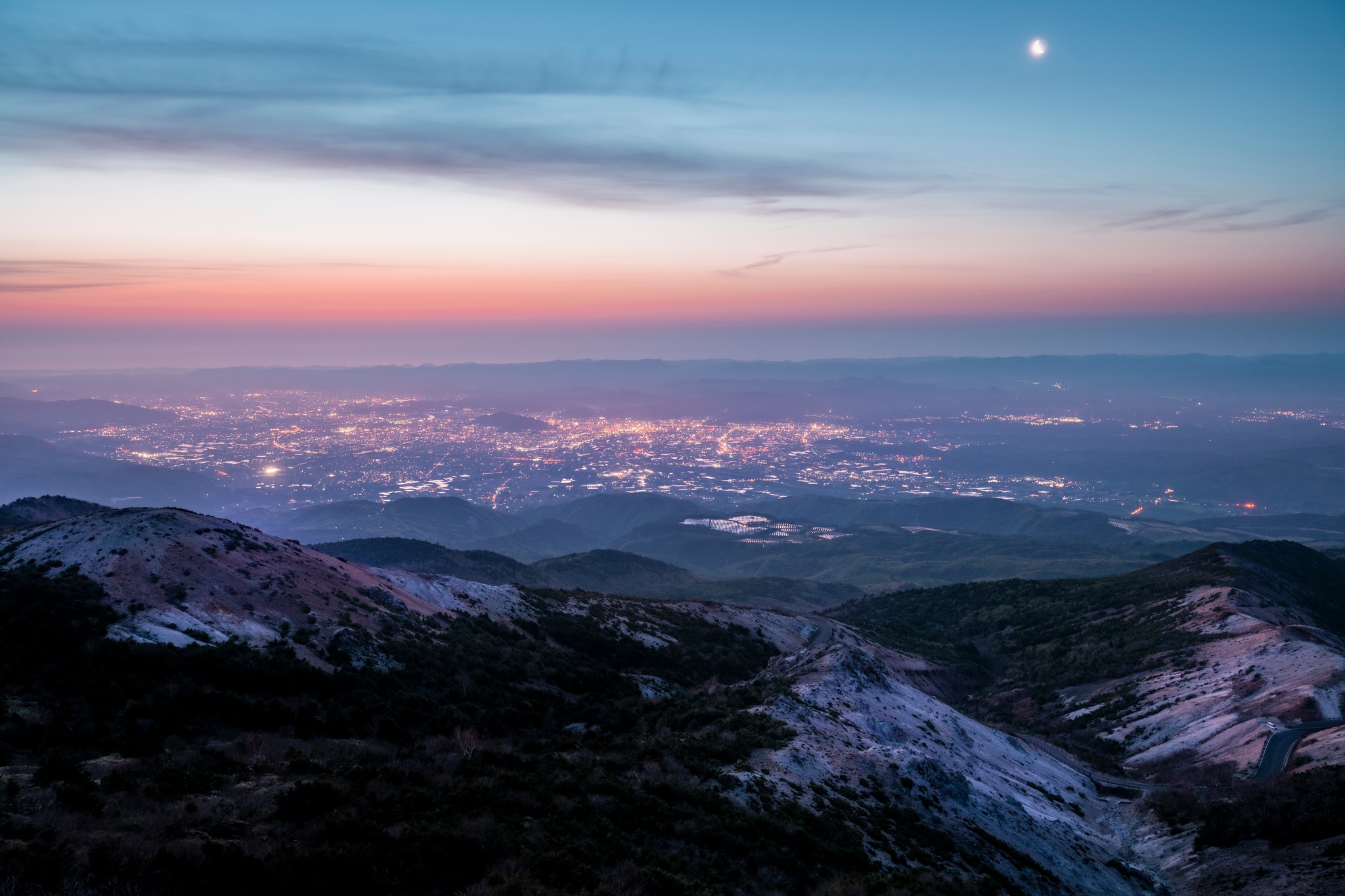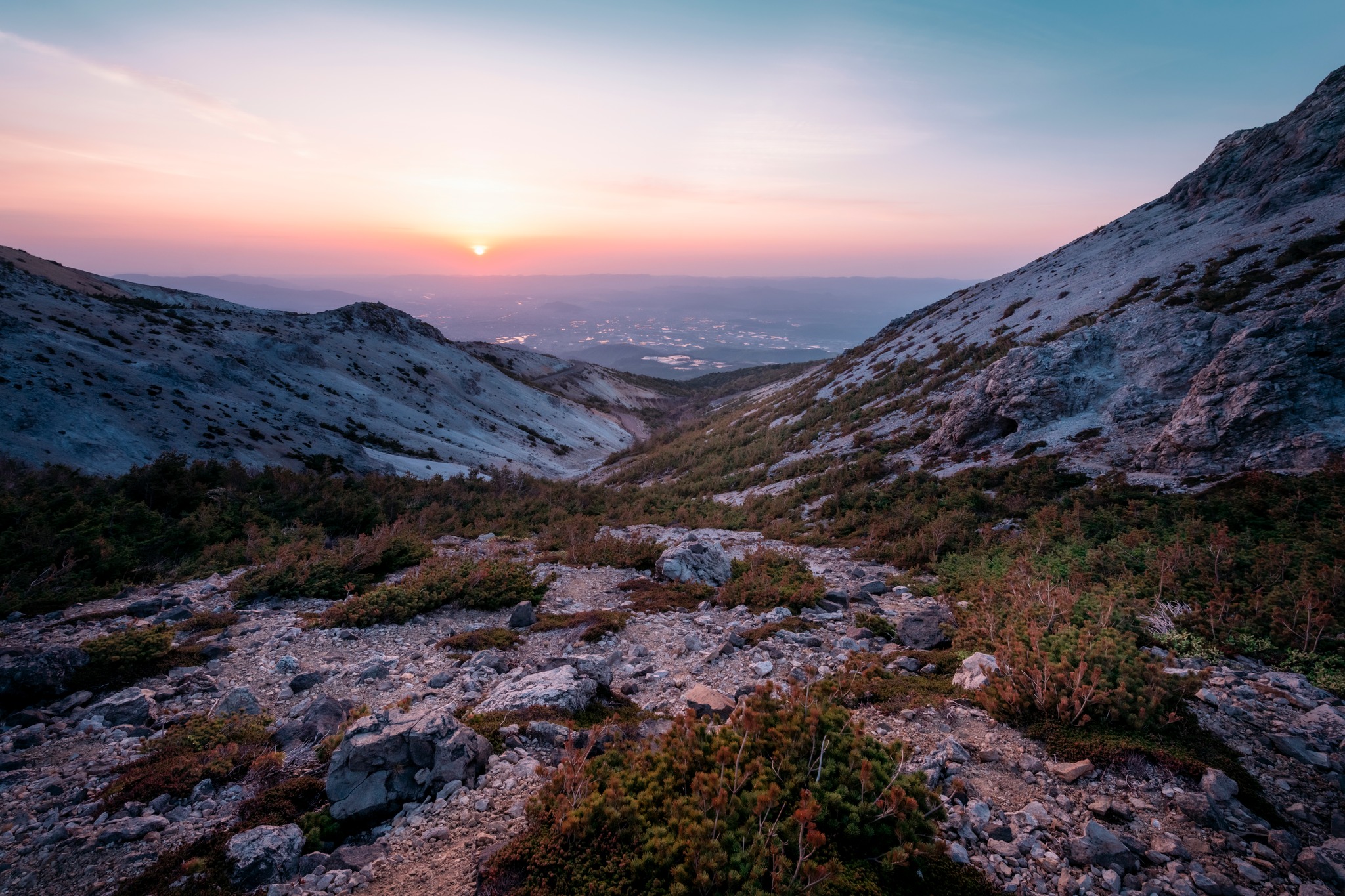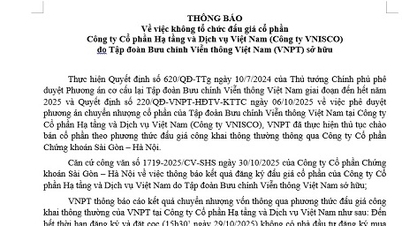According to EarthSky, the Earth's shadow is easily visible to the naked eye. From a scientific perspective, the Earth's shadow in the sky is a natural optical feature that appears twice a day at sunrise and sunset.
The Earth's shadow appears as a dark blue band running close to the horizon at sunrise or sunset. Meanwhile, the belt of Venus appears as a pink band lying above the Earth's shadow.
PHOTO: THANH TUNG
Like all planets orbiting the sun, Earth casts a shadow. Earth's shadow is about 1.4 million km long and points towards the sun. As sunlight passes through the atmosphere, this shadow appears as a dark blue band running close to the horizon.
Observing the Earth’s shadow is easy, provided the visibility is clear. Just after sunset this afternoon, November 12, you only need look east to see a dark arc, darker than the blue of the twilight sky.
What about the earth's shadow at dawn?
Conversely, before dawn, the Earth’s shadow will appear in the west. The curved shape of the shadow reflects the curvature of our planet. If you continue to watch, you can see the shadow move up or down at a rate corresponding to the setting or rising of the sun on the opposite side.
A closely related phenomenon is the Belt of Venus. It appears as a pink band above the Earth’s shadow. When the sun is below the horizon, some of the star’s light is backscattered by dust and gas at the antisolar point, giving it a characteristic pink hue.
The earth's shadow appears twice a day at dawn and dusk.
PHOTO: THANH TUNG
Although the name refers to the planet Venus, the belt of Venus actually originates from ancient mythology and has nothing to do with the planet’s actual position in the sky. After all, Venus never appears opposite the sun in the sky.
The Earth's shadow is also closely related to lunar eclipses. When the sun, Earth, and moon are almost aligned, the Earth's shadow can cover the moon, creating a total, partial, or penumbral lunar eclipse. The reddish glow we see from the moon during a total lunar eclipse comes from sunlight being scattered as it passes through the Earth's atmosphere before being refracted and entering the shadow.
Source: https://thanhnien.vn/chieu-nay-dung-bo-lo-dip-ngam-bong-cua-trai-dat-luc-hoang-hon-185251112112412666.htm







![[Photo] Prime Minister Pham Minh Chinh attends a conference to review one year of deploying forces to participate in protecting security and order at the grassroots level.](https://vphoto.vietnam.vn/thumb/1200x675/vietnam/resource/IMAGE/2025/11/12/1762957553775_dsc-2379-jpg.webp)

![[Photo] The "scars" of Da Nang's mountains and forests after storms and floods](https://vphoto.vietnam.vn/thumb/1200x675/vietnam/resource/IMAGE/2025/11/13/1762996564834_sl8-jpg.webp)




















![[Photo] Highways passing through Dong Nai](https://vphoto.vietnam.vn/thumb/1200x675/vietnam/resource/IMAGE/2025/11/12/1762940149627_ndo_br_1-resize-5756-jpg.webp)































































![Dong Nai OCOP transition: [Article 3] Linking tourism with OCOP product consumption](https://vphoto.vietnam.vn/thumb/402x226/vietnam/resource/IMAGE/2025/11/10/1762739199309_1324-2740-7_n-162543_981.jpeg)








Comment (0)